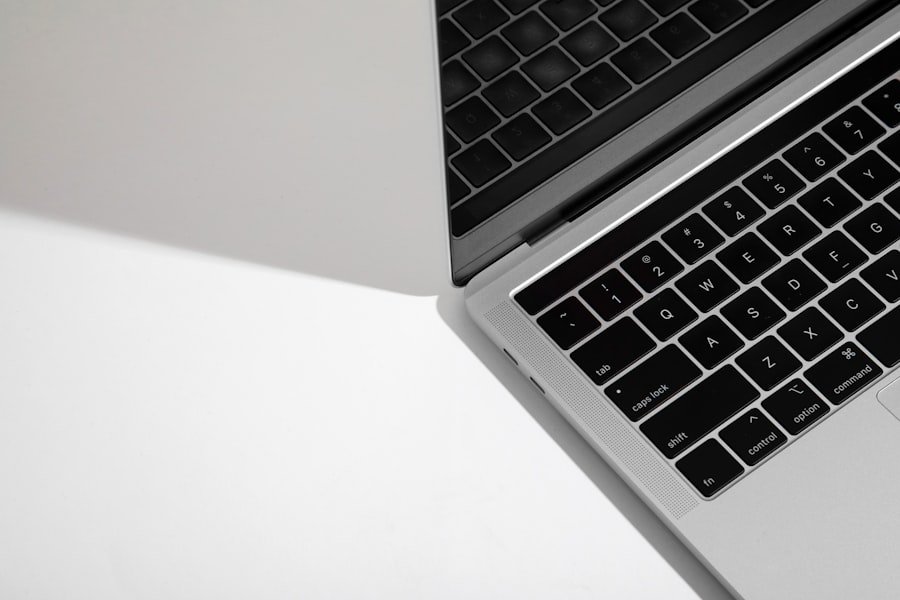Valorant, developed by Riot Games, is a tactical first-person shooter that has gained immense popularity since its release in 2020. The game combines elements of traditional shooting mechanics with unique character abilities, creating a dynamic and strategic gameplay experience. Players assume the roles of “agents,” each possessing distinct skills that can influence the outcome of matches.
The game is designed to be competitive, with a focus on teamwork, strategy, and precise aiming. To fully appreciate the intricacies of Valorant, it is essential to understand its system requirements, which dictate the hardware and software specifications necessary for optimal performance. The minimum system requirements for Valorant include a Windows 7/8/10 operating system, an Intel Core 2 Duo E8400 processor, 4 GB of RAM, and a graphics card equivalent to an Intel HD 3000.
However, for a more enjoyable experience, Riot Games recommends a more robust setup: an Intel i3-4150 processor, 4 GB of RAM, and a GTX 730 or Radeon R7 240 graphics card. These specifications highlight the importance of having a capable machine to run the game smoothly, especially in competitive scenarios where frame rates and responsiveness can significantly impact gameplay. While Valorant is optimized to run on lower-end systems, players seeking to maximize their experience will benefit from meeting or exceeding these recommended specifications.
Key Takeaways
- Valorant is a popular first-person shooter game with moderate system requirements
- Playing Valorant on a MacBook may be limited due to hardware and software constraints
- Potential workarounds for playing Valorant on a MacBook include using virtual machines or cloud gaming services
- Boot Camp can be used to install Windows on a MacBook for playing Valorant
- Using an external GPU can significantly improve the gaming performance of Valorant on a MacBook
- Cloud gaming services offer a potential solution for playing Valorant on a MacBook with limited hardware capabilities
- Tips for optimizing performance when playing Valorant on a MacBook include closing background applications and adjusting in-game settings
- Future prospects for playing Valorant on a MacBook may improve with advancements in hardware and software compatibility
Limitations of playing Valorant on a MacBook
While Valorant is primarily designed for Windows-based systems, many players are eager to experience the game on their MacBooks. However, there are inherent limitations when attempting to play Valorant on Apple’s laptops. One of the most significant challenges is the lack of native support for the game on macOS.
This absence means that players cannot simply download and install Valorant as they would on a Windows machine. Instead, they must explore alternative methods to run the game, which can introduce complications and potential performance issues. Another limitation stems from the hardware capabilities of many MacBook models.
While some newer MacBooks come equipped with powerful processors and graphics capabilities, they often fall short when compared to dedicated gaming PCs. The integrated graphics found in many MacBook models may struggle to deliver the frame rates necessary for competitive play in Valorant. Additionally, thermal management can be a concern; prolonged gaming sessions can lead to overheating, resulting in throttled performance and an overall subpar gaming experience.
These limitations can deter players from fully engaging with the game and may lead to frustration when attempting to compete at higher levels.
Potential workarounds for playing Valorant on a MacBook

Despite the challenges associated with playing Valorant on a MacBook, several workarounds exist that can enable players to enjoy the game. One common approach is to use virtualization software such as Parallels Desktop or VMware Fusion. These applications allow users to run Windows alongside macOS, enabling them to install and play Windows-exclusive games like Valorant.
However, this method often comes with performance trade-offs; running a virtual machine can consume significant system resources, potentially leading to lower frame rates and increased latency during gameplay. Another workaround involves using Wine or similar compatibility layers that allow Windows applications to run on macOS without requiring a full Windows installation. While Wine can be effective for some games, it may not provide the stability or performance needed for a competitive title like Valorant.
Players may encounter bugs or crashes that disrupt their gaming experience. Additionally, setting up Wine can be complex and may require technical knowledge that not all players possess. As such, while these workarounds can provide access to Valorant on a MacBook, they often come with caveats that can affect overall enjoyment.
How to use Boot Camp to play Valorant on a MacBook
| Boot Camp Version | MacBook Model | Valorant Performance |
|---|---|---|
| Boot Camp 6.1 | MacBook Pro 2019 | 60+ FPS on medium settings |
| Boot Camp 6.0 | MacBook Air 2020 | 40+ FPS on low settings |
| Boot Camp 5.1 | MacBook Pro 2017 | 50+ FPS on medium settings |
One of the most effective methods for playing Valorant on a MacBook is through Boot Camp, Apple’s built-in utility that allows users to install Windows alongside macOS. This dual-boot setup enables players to run Windows natively on their Mac hardware, providing access to the full range of system resources without the overhead associated with virtualization. To get started with Boot Camp, users must first ensure they have a compatible Mac model and sufficient storage space for both operating systems.
The installation process involves downloading a Windows ISO file from Microsoft’s website and using the Boot Camp Assistant application found in macOS. This tool guides users through partitioning their hard drive and installing Windows. Once Windows is installed, players can download and install Valorant just as they would on any standard PThe advantage of this method lies in its ability to leverage the MacBook’s hardware capabilities fully, resulting in improved performance compared to virtualization or compatibility layers.
However, players should be aware that switching between macOS and Windows requires rebooting the machine, which may not be ideal for those who frequently alternate between operating systems.
Exploring the option of using an external GPU for Valorant on a MacBook
For players seeking enhanced graphics performance while playing Valorant on a MacBook, utilizing an external GPU (eGPU) presents an intriguing option. An eGPU connects to a MacBook via Thunderbolt 3 and provides additional graphical power that can significantly improve gaming performance. This setup is particularly beneficial for models with integrated graphics that may struggle with demanding titles like Valorant.
To use an eGPU effectively, players must ensure their MacBook supports this technology and that they have a compatible eGPU enclosure along with a suitable graphics card. Once connected, macOS recognizes the eGPU, allowing users to configure it for use with specific applications, including games like Valorant running under Windows via Boot Camp. The increased graphical capabilities can lead to higher frame rates and improved visual fidelity, enhancing the overall gaming experience.
However, it is essential to consider the cost associated with purchasing an eGPU setup, as it can be a significant investment beyond the price of the MacBook itself.
Considering the possibility of cloud gaming for Valorant on a MacBook

System Requirements for Cloud Gaming
To utilize cloud gaming services for Valorant, players need a stable and fast internet connection capable of supporting streaming requirements. Once subscribed to a cloud gaming service that offers Valorant in its library, users can access the game through their web browser or dedicated application on their MacBook.
How Cloud Gaming Works
The cloud service handles all processing and rendering on remote servers, sending only video output back to the player’s device. This method eliminates concerns about local hardware performance but introduces potential latency issues depending on network conditions.
Weighing the Factors
Players must weigh these factors when considering cloud gaming as a viable option for enjoying Valorant.
Tips for optimizing performance when playing Valorant on a MacBook
To ensure an optimal gaming experience while playing Valorant on a MacBook, several performance optimization tips can be implemented. First and foremost, players should adjust in-game settings to balance visual fidelity with performance. Lowering graphics settings such as texture quality, shadow detail, and anti-aliasing can lead to improved frame rates without sacrificing too much visual quality.
Additionally, enabling features like “Reduce Buffering” can help minimize input lag during gameplay. Another crucial aspect of optimization involves managing background processes that may consume system resources while gaming. Closing unnecessary applications and disabling startup programs can free up RAM and CPU power for Valorant.
Players should also consider adjusting their MacBook’s energy settings to prioritize performance over battery life during gaming sessions. Keeping the device cool is essential; using a cooling pad or ensuring proper ventilation can prevent thermal throttling that could hinder performance during extended play sessions.
Future prospects for playing Valorant on a MacBook
As technology continues to advance, the future prospects for playing Valorant on a MacBook appear promising yet uncertain. With ongoing developments in cloud gaming technology and potential improvements in Apple’s hardware offerings, players may find more accessible ways to enjoy their favorite games without being constrained by operating system limitations or hardware capabilities. The increasing popularity of cross-platform play could also encourage developers like Riot Games to consider native support for macOS in future updates.
Moreover, as Apple transitions its lineup towards Apple Silicon chips like the M1 and M2 series, there may be opportunities for enhanced gaming experiences on MacBooks moving forward. These chips have demonstrated impressive performance in various applications, including gaming; however, whether they will support titles like Valorant natively remains to be seen. As developers adapt their games for new architectures and platforms evolve, players can remain hopeful that solutions will emerge that allow them to enjoy competitive titles like Valorant seamlessly on their MacBooks without resorting to complex workarounds or compromises in performance.
If you are wondering if you can play Valorant on your MacBook, you may want to check out this article on privacy policy for gaming software. Understanding the privacy policies of gaming platforms can help you make informed decisions about which games to download and play on your device. By familiarizing yourself with the terms and conditions outlined in this article, you can ensure that you are using gaming software that aligns with your values and preferences.
FAQs
Can you play Valorant on MacBook?
Yes, it is possible to play Valorant on a MacBook using a Windows emulator or by using Boot Camp to install Windows on your MacBook.
Is there a native version of Valorant for Mac?
As of now, Riot Games has not released a native version of Valorant for Mac. The game is only officially supported on Windows operating systems.
What is Boot Camp?
Boot Camp is a utility that comes pre-installed on Mac computers, allowing users to dual-boot their Mac with Windows. This enables Mac users to run Windows applications and games on their Mac computers.
What are Windows emulators?
Windows emulators are software programs that allow Mac users to run Windows applications and games on their Mac computers without the need to dual-boot with Windows. Popular Windows emulators for Mac include Parallels Desktop and VMware Fusion.
Are there any limitations to playing Valorant on a MacBook?
Using a Windows emulator or Boot Camp to play Valorant on a MacBook may result in performance limitations, as Mac hardware may not be optimized for gaming. Additionally, compatibility issues and technical glitches may arise when running Windows applications on a Mac.
